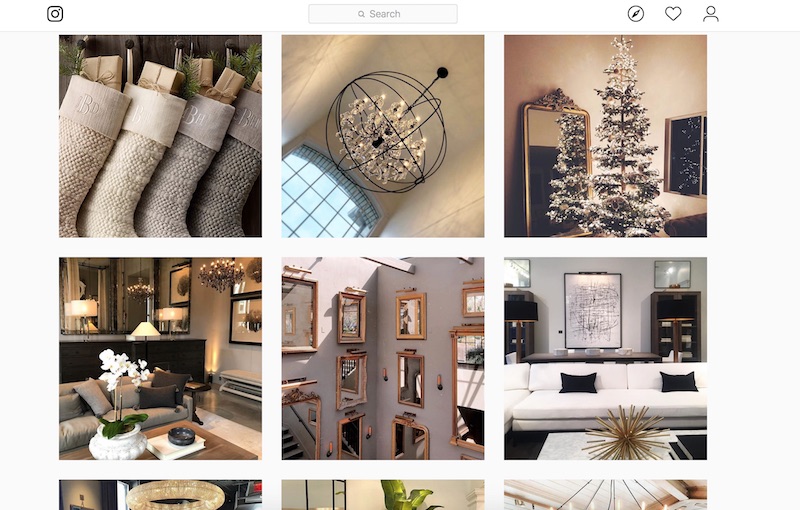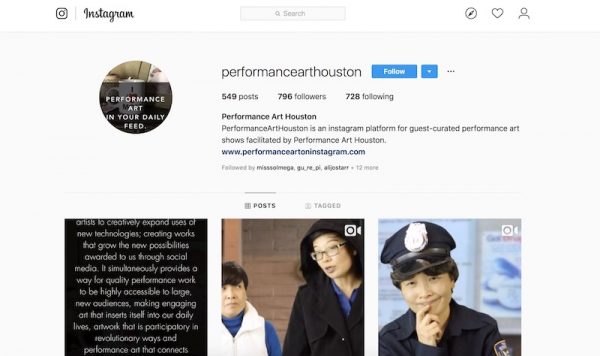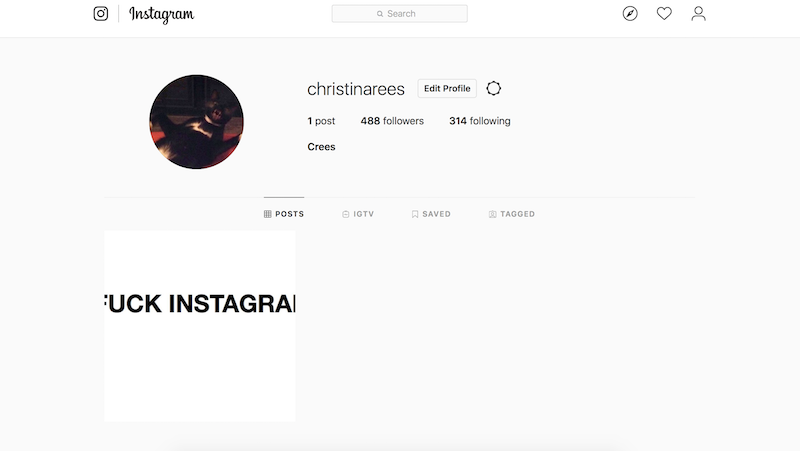
I’d like to think that by the time I publish this, on December 30, 2018, Instagram will be over. It won’t be, of course, but I can harbor an extended New Year’s wish that by the time 2019 winds down, artists will have left Instagram with the same cheerfully wry “Don’t be a stranger!” salute that plenty of people opted for when quitting Facebook this past year. I do feel like some of my favorite artists post less often on Instagram than they once did, and if they do post they post less of their actual artwork. I see photos of their cats hiding in shoeboxes, or their kids playing in snow. It’s fast, no-brainer content by people who don’t really care to feed the beast anymore, but maybe worry that if they don’t post something, they’ll… cease to exist, at least in the minds of other people? It seems like many of the clever artists who had some ironic or absurd fun with Instagram in the beginning are tired of producing its content for it. Good.
I realize that big, evil Facebook owns Instagram. I understand that artists — visual artists — as well as craftspeople (totally different animals), and designers and anyone else working primarily with visual information are drawn to Instagram because it doesn’t outright ask them to do what the world (or Facebook) asks of them, which is to use a lot of text to communicate. All those fast, glossy images on Instagram! Scroll scroll scroll… People wired for visual forms of communication, and shitty wordsmiths dedicated to cultivating their ‘brand’ found an early refuge on Instagram. And in the beginning, friends encouraged me to use Instagram to keep up with artists’ work and the work of other cultural figures I admire. I still sometimes try. Scroll, scroll, scroll… .

At one point I cleared out a large number of people I had originally ‘followed’ on Instagram because I was following the obnoxious ‘lifestyle’ versions of people I actually like in real life. This is not a new story. But the sick sense of artifice and heavily edited ‘sharing’ of one’s personal life or output that Instagram demands is especially terrible for exploring or experiencing real art, and for obvious reasons: Real art starts with an idea, often an original concept, and the flattening, drive-by, non-experience afforded by Instagram falls terribly short of how an artist would like a viewer to encounter their work. Sure, it can function as a kind of preview. But more often, it’s a stand-in for people going to see the work — unless the artist is making art for Instagram. (More on that in a second.)
Most artists I know who are making good work still slave away in a studio to create distinct and discrete two- and three-dimensional artworks, moving images, and visual art experiences that exist and bloom in dedicated physical spaces, in person, in communities. That’s the point of art: Show up and slow down. Question what you think you know. Look at the work, then world around you in relation to that artwork, and then reconsider the world yet again. Has the artwork changed you, or your world? If it’s any good, it sure has. So while Instagram is good for showing us well-composed photos of consumer products — and décor, and people’s nice tanned shoulders, and illustration, and some excellent photojournalism — when it comes showing us art, it’s like a massive Serra sculpture being driven past your house at 200 miles an hour on the back of a flatbed truck: Yeah, I saw it, kinda. I guess. Okay. You saw it — on Instagram. Stay home, then. (Or, if that speeding Serra was a popular hashtag, then get in your car and chase it and take pictures and post them on Instagram! Whee!)

Interesting and meaty art ideas, and the vessels that artists create to embody these ideas, take time to consider. Instagram is about speed, volume, profit, and fire-hosing as much information at you as possible, to keep you distracted, or consuming, or both, and to keep your face buried in a screen. I have wicked A.D.D. and am self-indulgently distracted almost beyond description, but you don’t have to remind me that instant gratification is, historically, just one possible entry point for visual art, and terrible end-goal for it (for most things, actually). And I’d posit that the Instagramming of visual art is so reductive to real art that it starts to visually and psychologically overlap (depressingly so) with ubiquitous and safe interior design. Restoration Hardware figured that out awhile back.
Remember when art’s chattering class worried about the “Art Fair”-ing of art? That all the younger artists flooding out of art schools (and some more seasoned artists who should know better) would strive to create instantly gettable, gimmicky, conceptual-lite work that a new collector could feel smart for “understanding” and buying from a booth at Frieze? It wasn’t idle worry. We’re surrounded by quick-take dreck that’s meant to be art. Take that circa-2006 concern, kick the can down the street for a few years and a few tech developments later, and you have a continuation of that phenomenon. The dreadful Art Fair-ing of art has become the Instagramming of art. It’s no wonder that Art fairs and Instagram are so cozy.
Opportunistic non-artists are making “art”-looking things in increasing numbers, for an Instagram audience, and they have the Patreon accounts to back it up. Instagram levels the visual playing field between some of the smartest visual artists I know and some of the most contrived and insipid people I’ve ever come across. As usual, I’m bent out of shape at the idea that well-meaning people who like to look at art online can’t discern the good from the bad, or real from the fake, and even worse: No one really cares to discern anymore. That takes too long.

At best, and at first, Instagram was something good artists could use to mess with their audience, and mess with themselves, and stay in touch with one another’s output. There’s been some dedicated Instagram art I’ve admired over the past few years, though I admit I’m likely to scroll through it really really quickly. I understand that it would have been fun to use hashtags sardonically for a bit. It would be fun to confuse your extended Instagram family with wildly inappropriate posts. But real artists — spiky, free-thinking creatures who got into art in order to not be fully of of this flat-footed world and its arbitrary codes of how we organize ourselves — have either capitulated to Instagram’s surprisingly non-benevolent (and again, flattening) dictatorship of all things visual, or maybe they’re wising up and hopping off. They should. Making your art with the expectation that social media and Instagram are your most important — and bullying and shallow — communication tools is not good for your art or for the audience you make it for. It’s just not.
Put another way: Do you want to look at Instagram? Or do you want to look at art?



